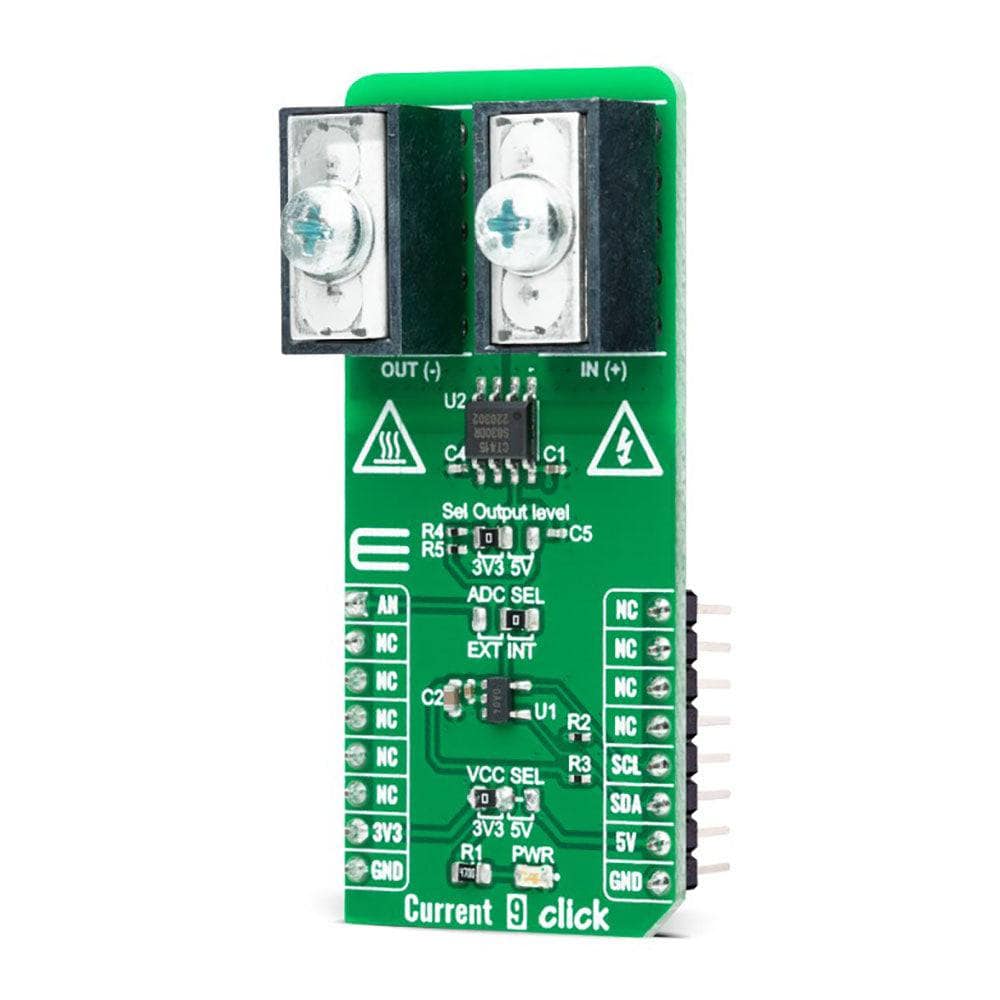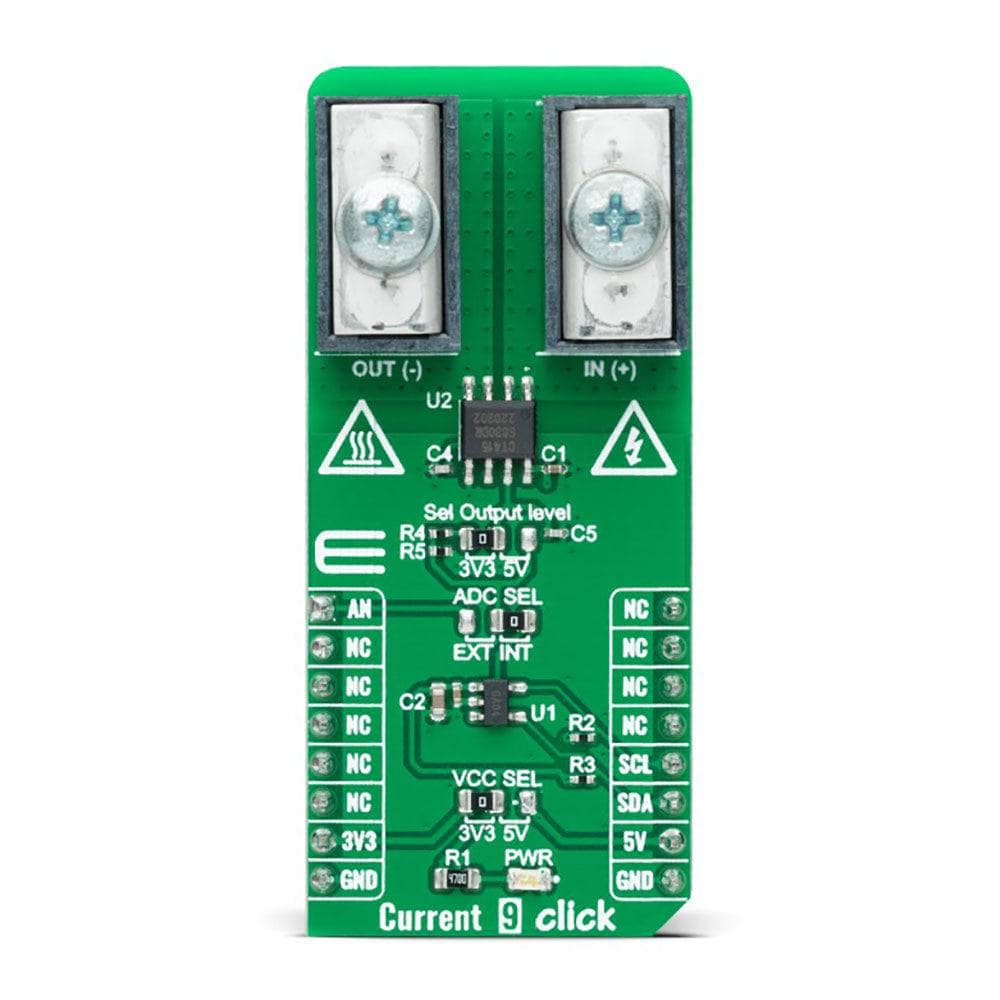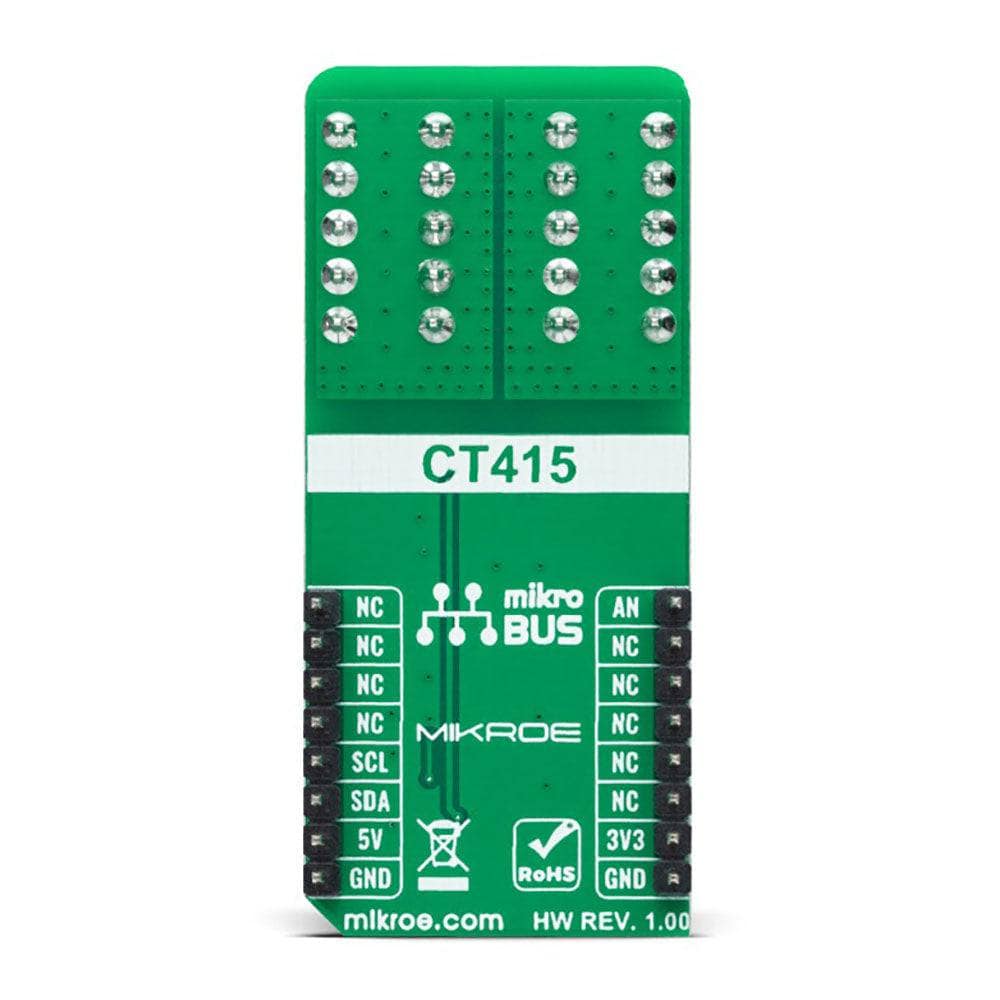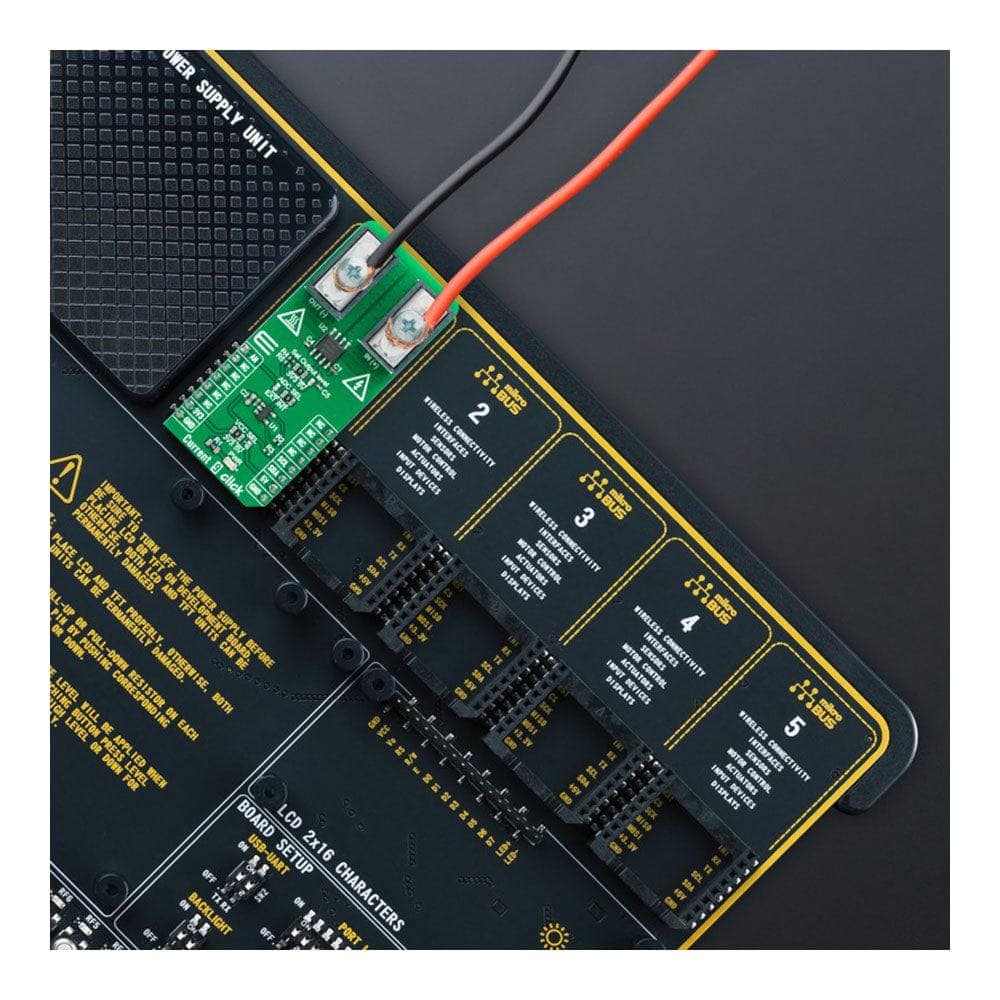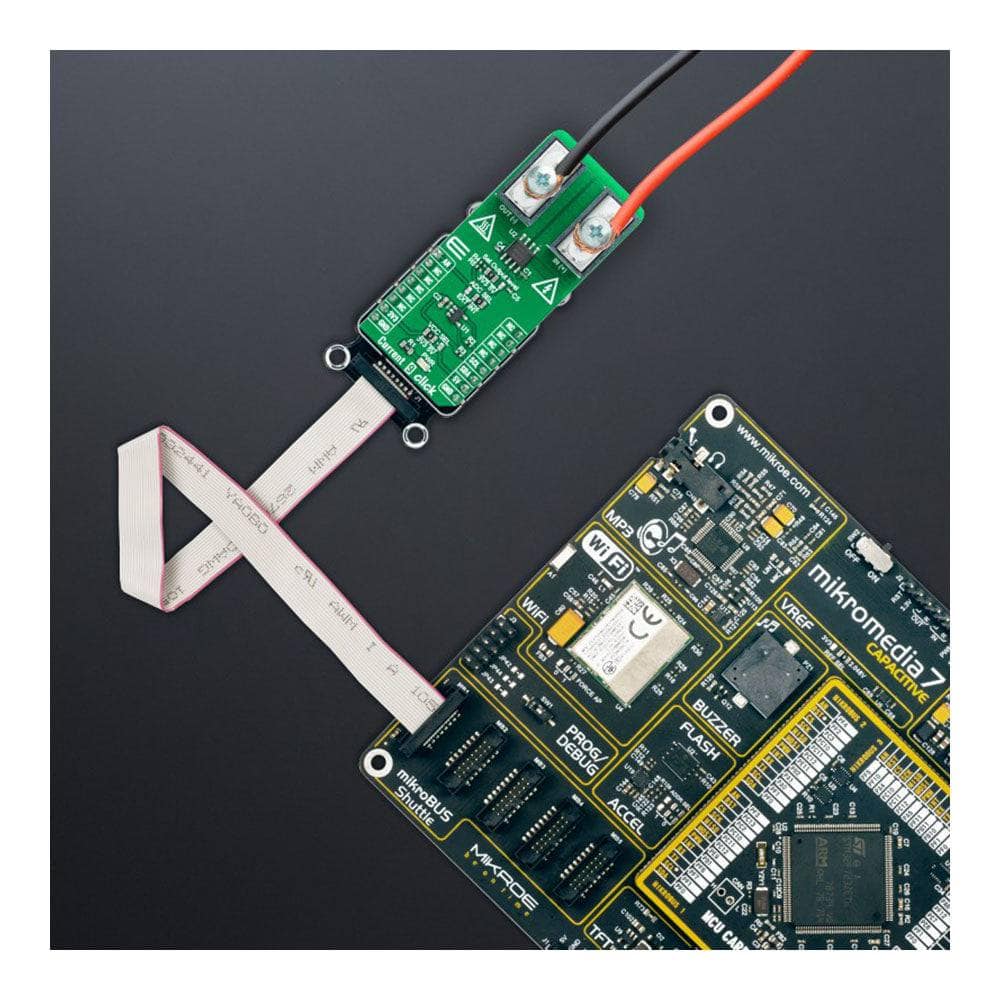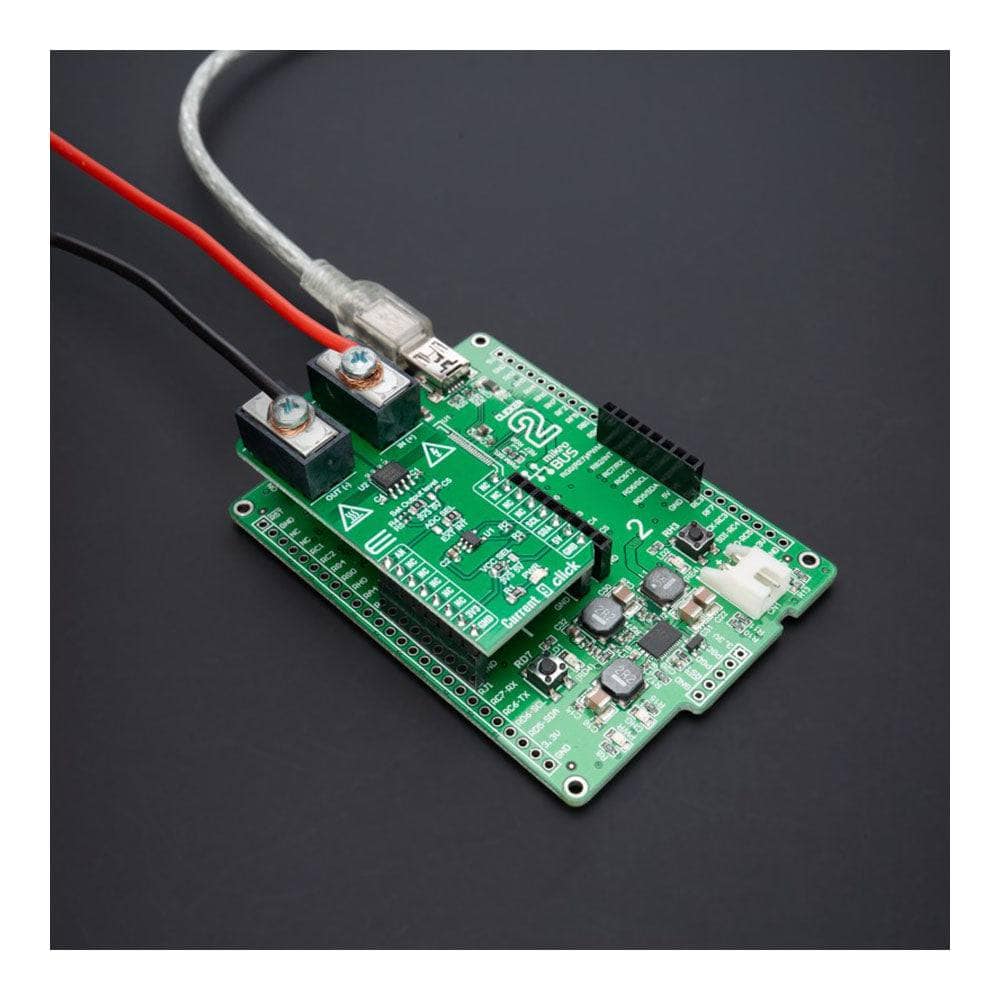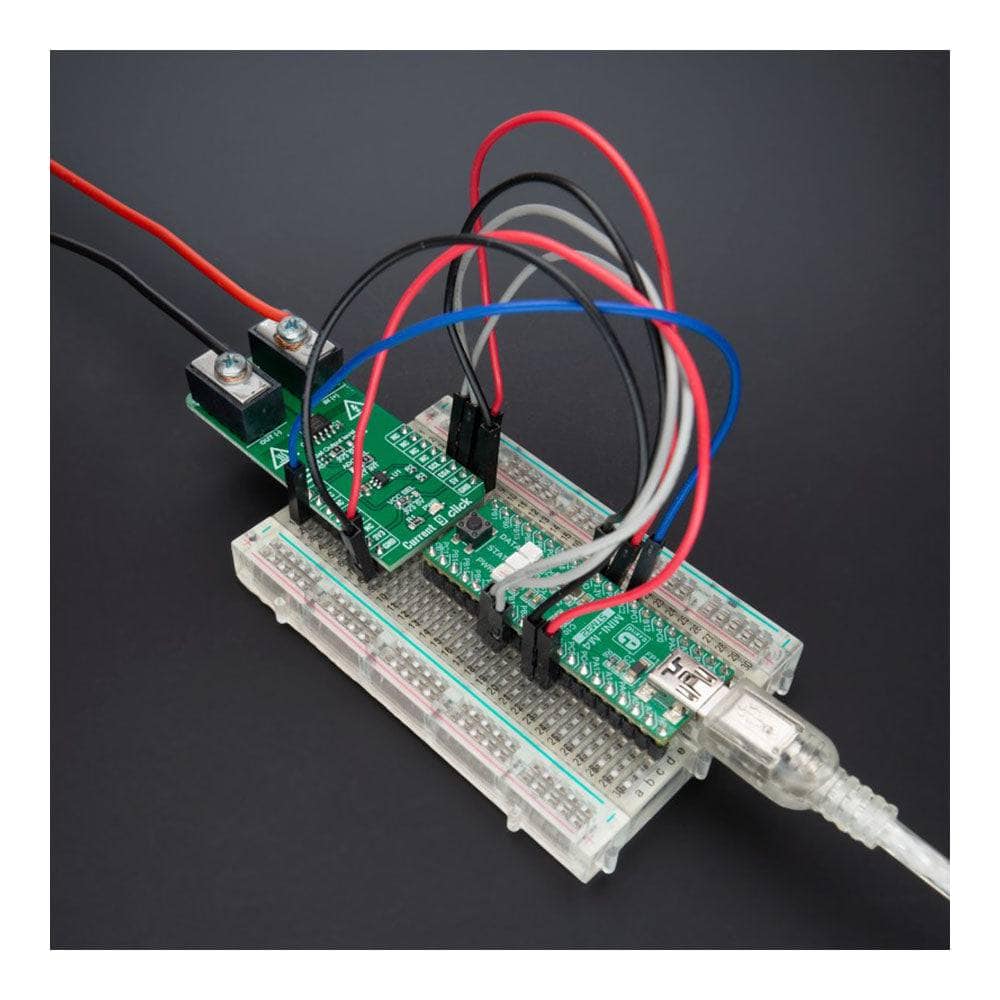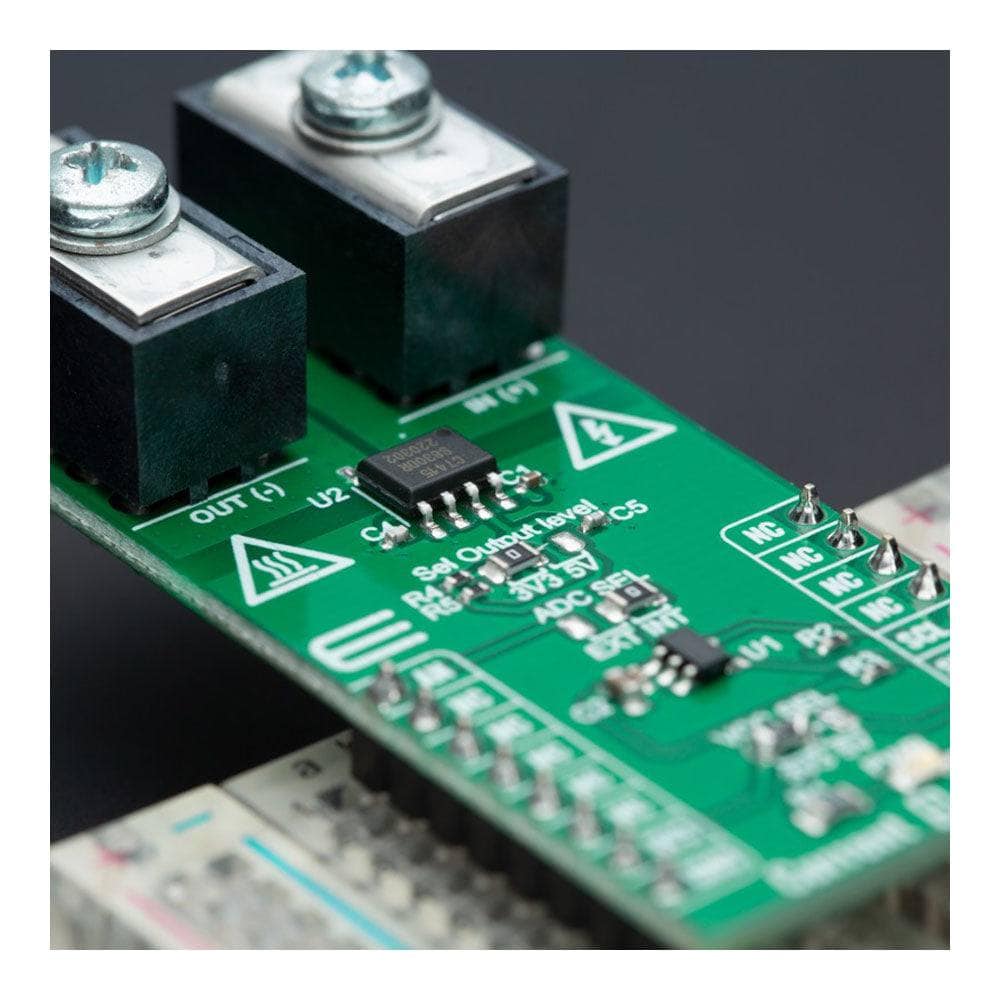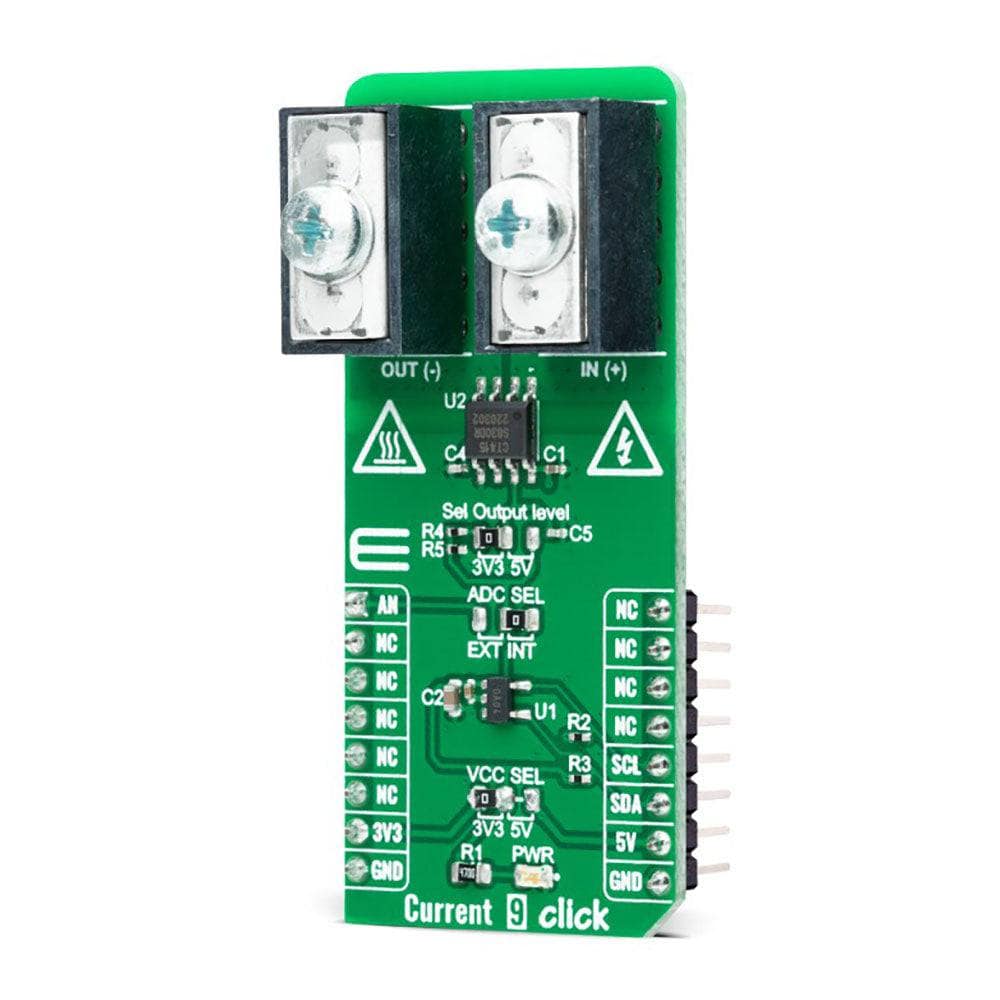
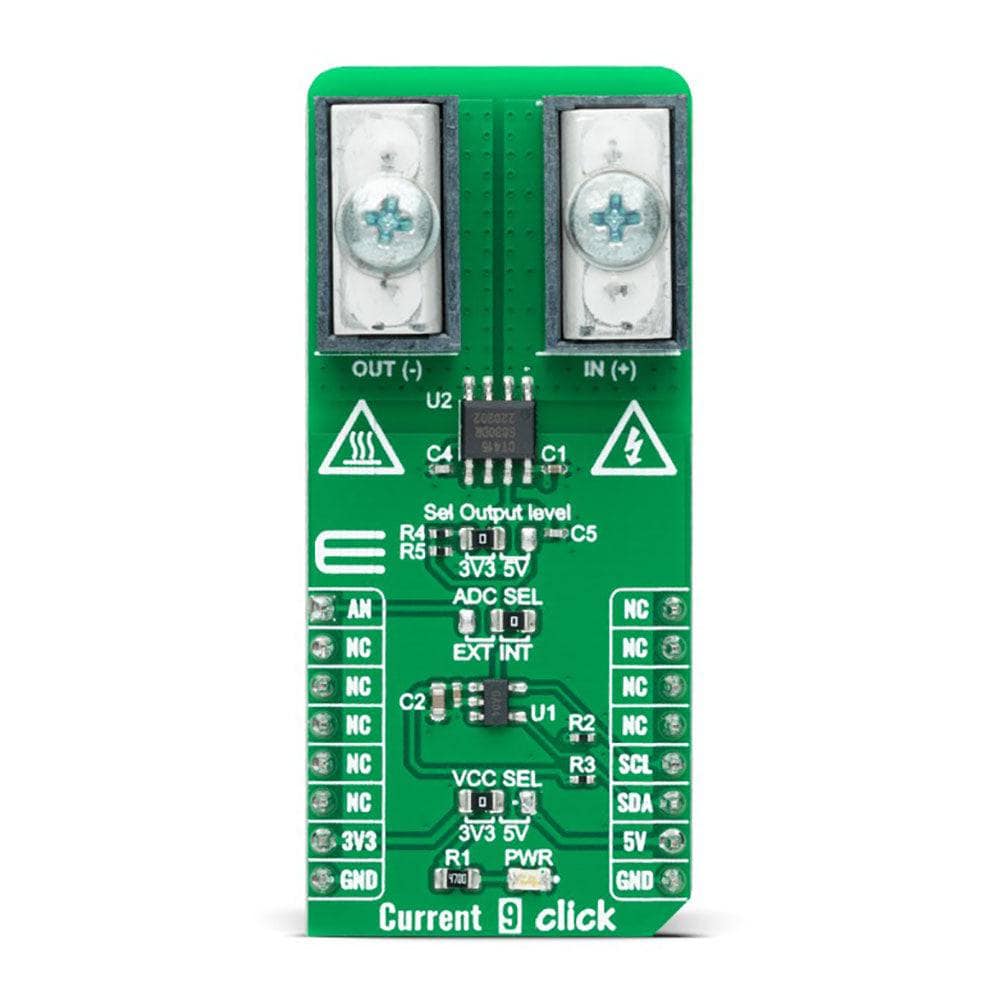
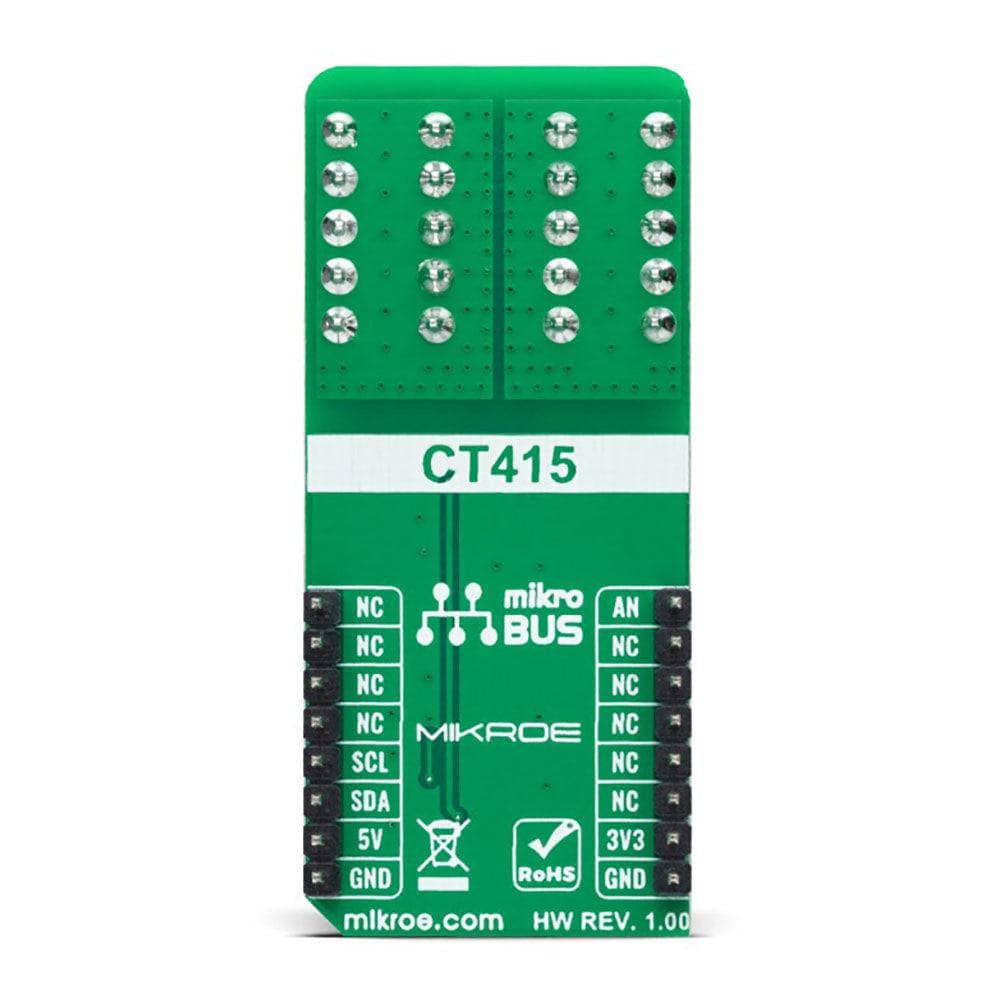
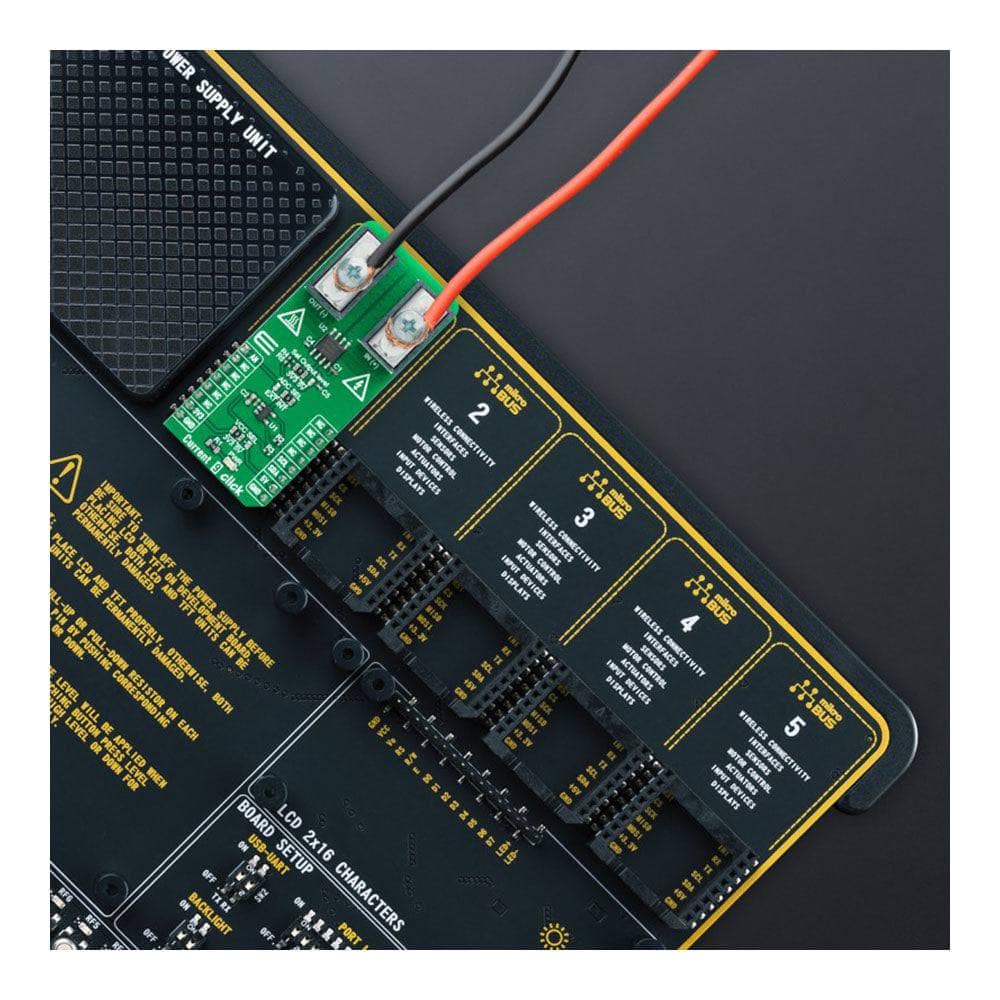
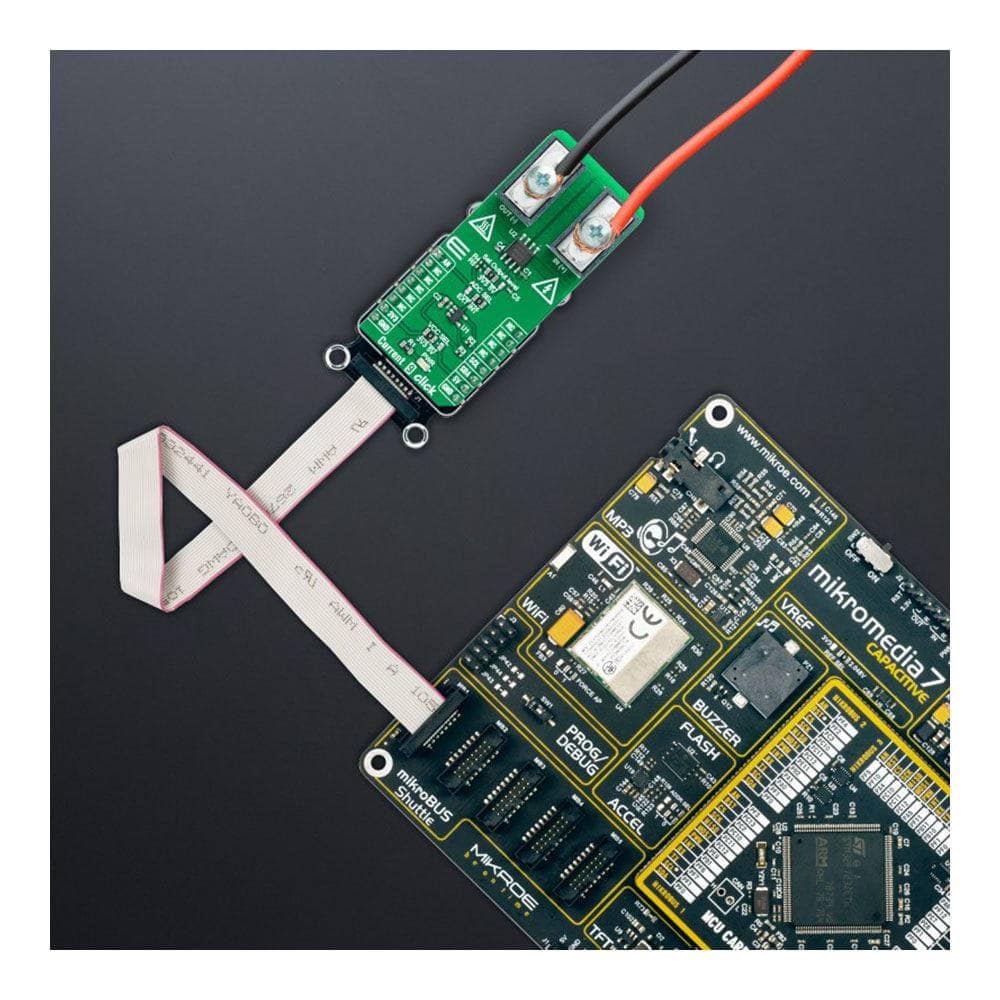
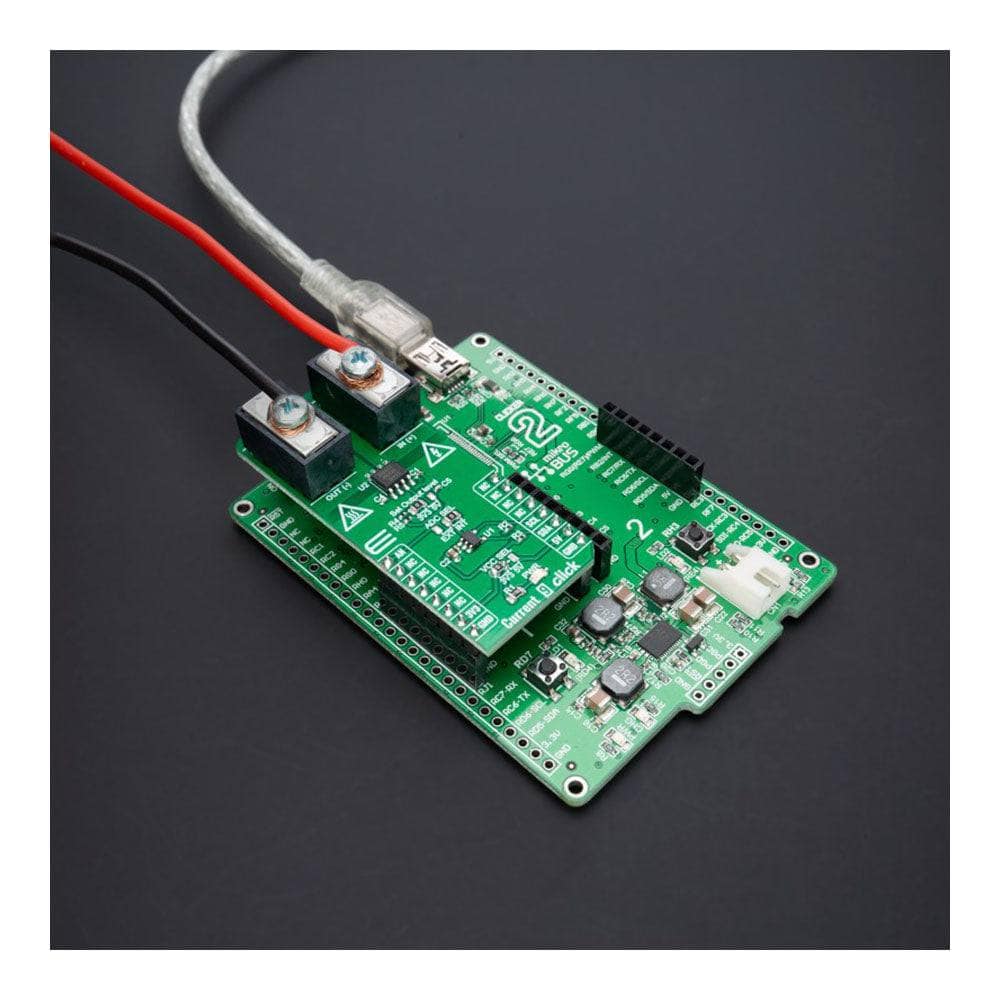
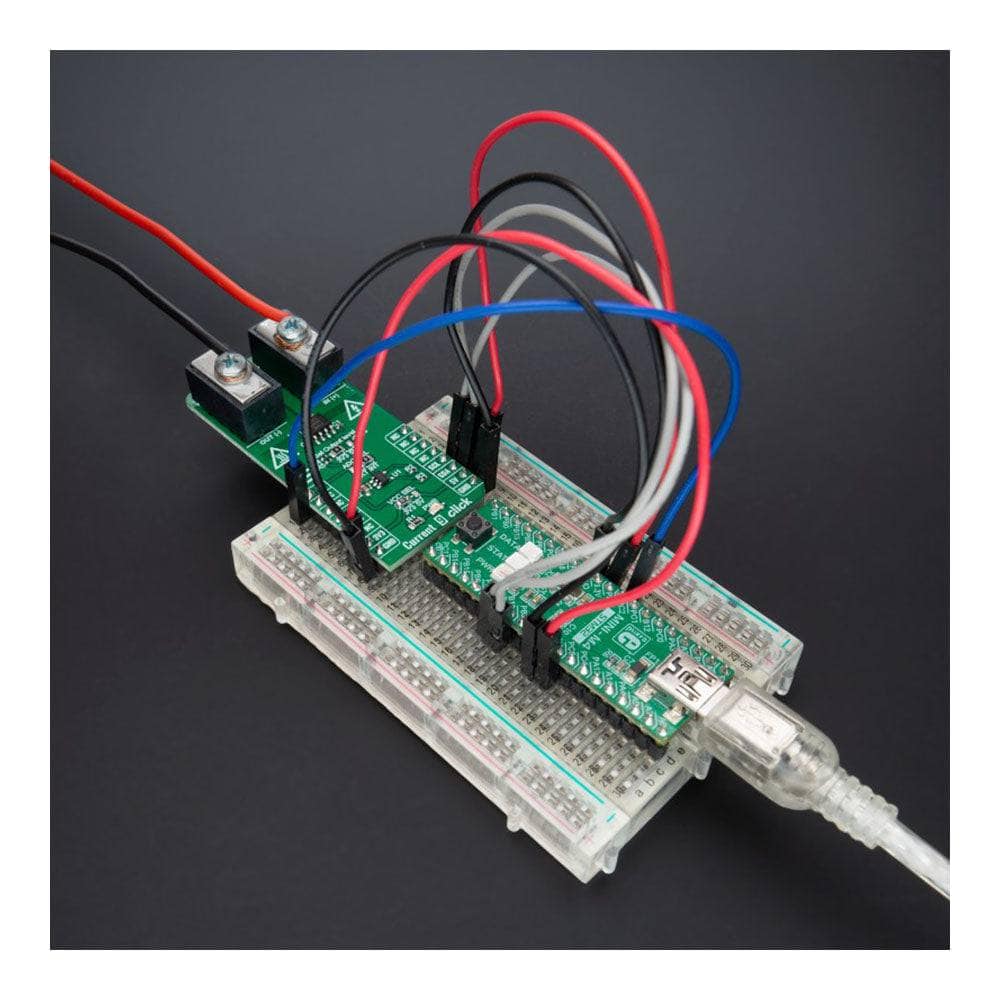
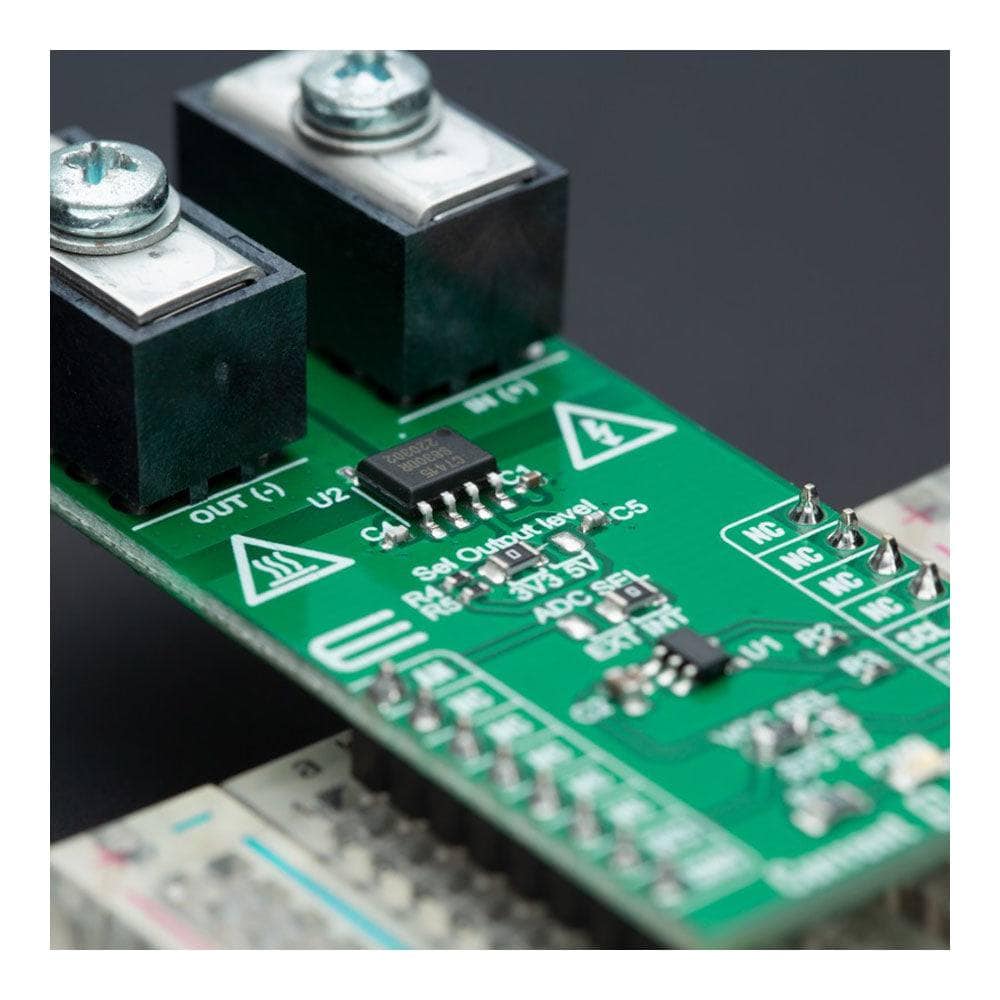
Key Features
Overview
The Current 9 Click Board™ is a compact add-on board providing a precise and accurate current sensing solution. This board features the CT415-HSN830DR, high-bandwidth and ultra-low-noise XtremeSense® TMR current sensor designed for the current range up to 30A from Crocus Technology. This sensor also features an integrated current-carrying conductor which handles rated current and generates a current measurement as a linear analogue output voltage, accomplishing a total output error of about ±1% full-scale. After that, the user can process the output voltage in analogue or digital form. This Click board™ is ideal for high-accuracy current measurements for many consumer, enterprise, and industrial applications.
The Current 9 Click Board™ is supported by a mikroSDK-compliant library, which includes functions that simplify software development. This Click board™ comes as a thoroughly tested product, ready to be used on a system equipped with the mikroBUS™ socket.
Downloads
Das Current 9 Click Board™ ist eine kompakte Zusatzplatine, die eine präzise und genaue Stromerfassungslösung bietet. Diese Platine verfügt über den CT415-HSN830DR, einen hochbandbreiten und extrem rauscharmen XtremeSense® TMR-Stromsensor für den Strombereich bis zu 30 A von Crocus Technology. Dieser Sensor verfügt außerdem über einen integrierten stromführenden Leiter, der den Nennstrom verarbeitet und eine Strommessung als lineare analoge Ausgangsspannung erzeugt, wodurch ein Gesamtausgangsfehler von ca. ±1 % des Skalenendwerts erreicht wird. Danach kann der Benutzer die Ausgangsspannung in analoger oder digitaler Form verarbeiten. Dieses Click Board™ ist ideal für hochpräzise Strommessungen für viele Verbraucher-, Unternehmens- und Industrieanwendungen.
Das Current 9 Click Board™ wird von einer mikroSDK-kompatiblen Bibliothek unterstützt, die Funktionen enthält, die die Softwareentwicklung vereinfachen. Dieses Click Board™ ist ein gründlich getestetes Produkt und kann auf einem System verwendet werden, das mit der mikroBUS™-Buchse ausgestattet ist.
| General Information | |
|---|---|
Part Number (SKU) |
MIKROE-5319
|
Manufacturer |
|
| Physical and Mechanical | |
Weight |
0.02 kg
|
| Other | |
Country of Origin |
|
HS Code Customs Tariff code
|
|
EAN |
8606027387661
|
Warranty |
|
Frequently Asked Questions
Have a Question?
Be the first to ask a question about this.

